Introduction
Keeping your dog’s paws healthy is crucial. Paw health directly impacts their mobility and overall comfort. Cuts on paw pads can cause pain and hinder movement. These injuries can result from various factors, such as sharp objects or rough terrain. Timely care is essential to prevent complications.
To be prepared for any paw-related emergencies, consider investing in a Dog First Aid Kit. This kit can be a lifesaver, ensuring you have the right tools to handle injuries on the go. Plus, it gives you peace of mind knowing you’re prepared for anything your adventurous pup may encounter.

Summary and Overview
Paw pads consist of tough, resilient tissue. They provide cushioning and protect against the ground’s harsh surfaces. Common causes of cuts include broken glass, sharp stones, or harsh weather conditions. First aid for paw injuries often starts at home, but knowing when to see a vet is vital. Preventive care and regular checks on your dog’s paws can help maintain their health.
Consider using a Dog Booties to protect those precious paw pads from rough terrains and hot pavements. Not only do they keep your dog’s paws safe, but they also add a touch of style to your walking adventures!
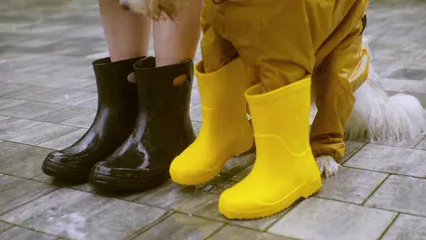
Understanding Dog Paw Pads
What Are Paw Pads?
Dogs have three main types of paw pads: the metacarpal, primary, and metatarsal pads. Each pad serves a unique function in mobility and protection. They help absorb shock during activities, maintain balance, and protect against temperature extremes. Healthy paw pads are vital for your dog’s overall well-being. Statistics show that paw injuries are common, underscoring the need for awareness and care.

Common Causes of Paw Pad Injuries
Environmental Hazards
Paw pad injuries can happen in many ways. Sharp objects like broken glass or metal often cause cuts. Dogs love to explore, but doing so can lead to painful encounters. Rough terrain can also exacerbate these injuries.
Chemical burns are another serious concern. Household cleaners and outdoor chemicals can harm your dog’s sensitive pads. Always be cautious about where your dog walks.
During hot summer days, heat from asphalt or concrete can blister paws. It’s best to walk your dog during cooler times of the day. Always check the ground temperature before heading out.
Understanding these environmental hazards can help you protect your furry friend. Keeping an eye out for dangers can prevent painful injuries. If your dog does get injured, using an Antiseptic Wound Spray can help clean the area and prevent infections.

Types of Paw Pad Injuries
Overview of Common Injuries
Cuts and abrasions are the most common injuries. Sharp objects can easily slice through the tough pad material. Symptoms may include limping or excessive licking of the injured area.
Punctures can occur when your dog steps on something sharp, like a nail or thorn. This type of injury can lead to infection if not treated promptly. Always check your dog’s paws after walks to ensure they’re injury-free.
Burns are serious injuries resulting from extreme temperatures or chemicals. Signs of burns include swelling, redness, or blistering. If you suspect a burn, contact your vet right away.
Knowing when to seek veterinary care is crucial. If you notice excessive bleeding or deep cuts, don’t hesitate to reach out to a professional.
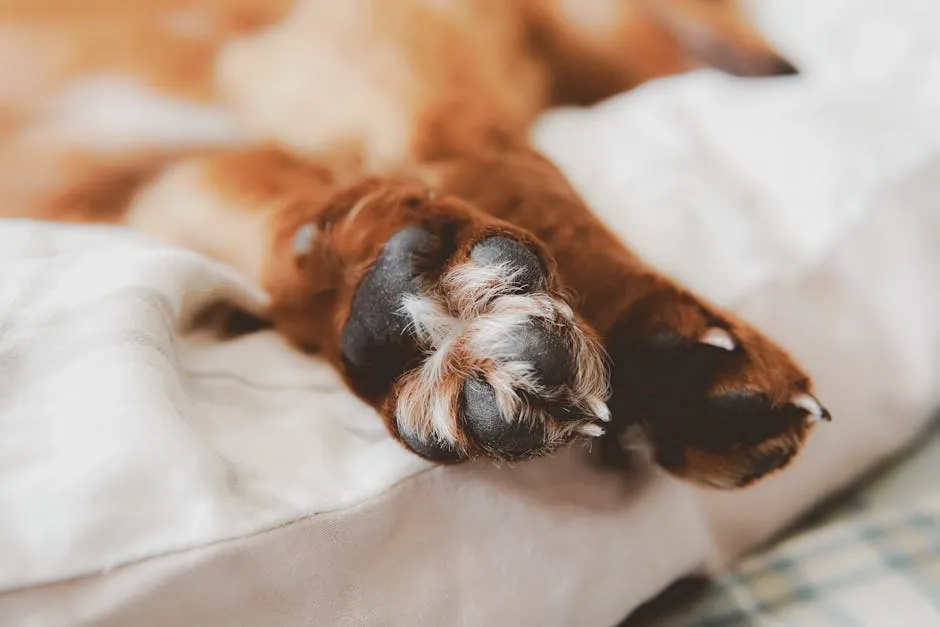
First Aid for a Cut Paw Pad
Immediate Steps to Take
1. Contact Your Vet
Getting professional advice is vital. Your veterinarian can guide you on the next steps based on your dog’s injury. If the cut appears deep or severe, visiting the vet may be necessary.
Recognizing the urgency of the situation can save your dog from complications. Don’t wait too long if you’re unsure about the severity of the cut. Your vet’s expertise can provide peace of mind and effective treatment options.
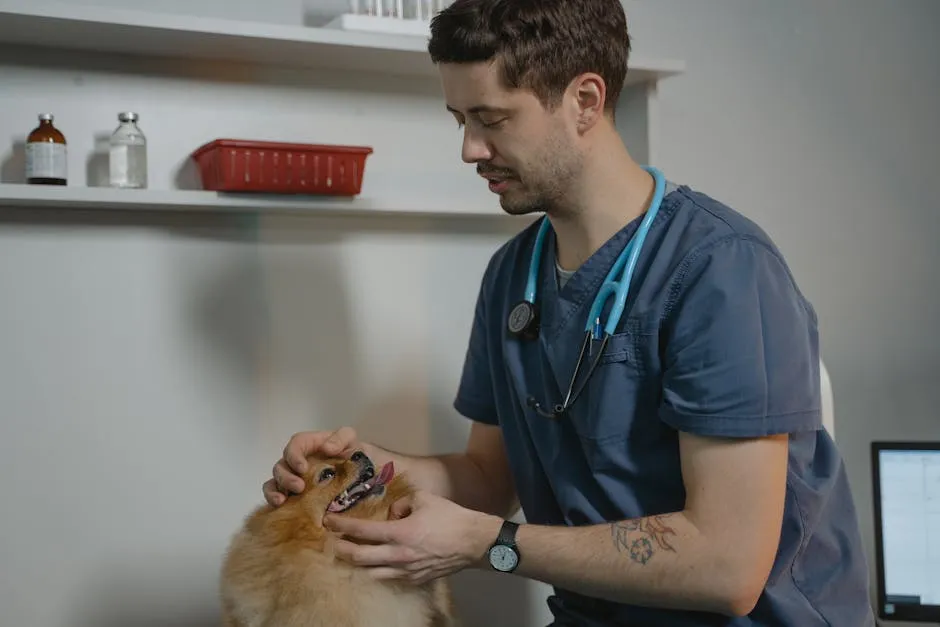
2. Examine the Injured Paw
First, check your dog’s paw closely. Look for any foreign objects stuck in the paw. Common culprits include glass shards, thorns, or gravel. If anything is loosely embedded, you can gently remove it using clean tweezers.
Be cautious; if a large object is lodged deep, do not attempt to remove it. Instead, contact your emergency vet for guidance. They can help you make your dog comfortable for transport. Inspecting the paw thoroughly can prevent further injury and discomfort.
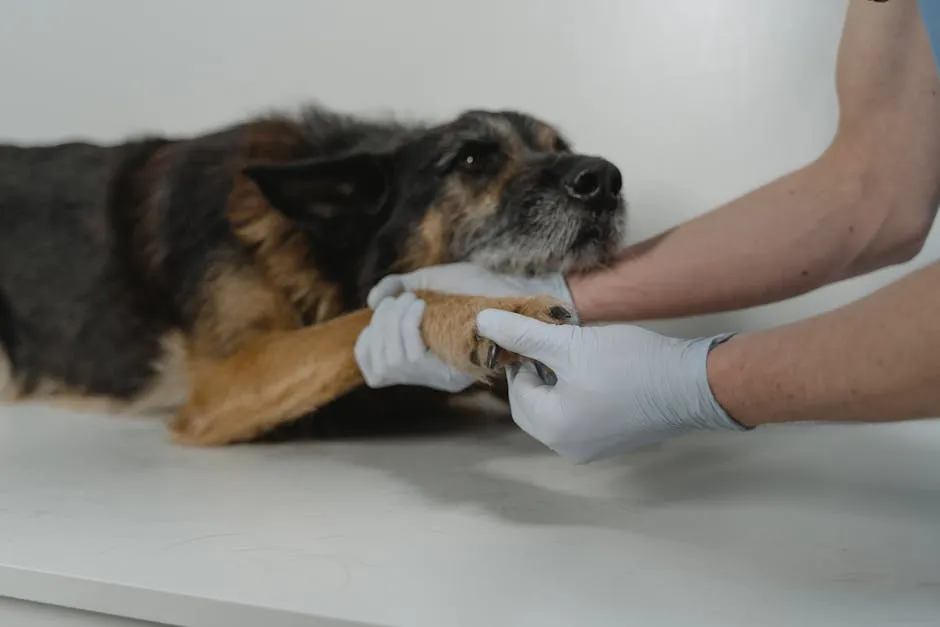
3. Clean the Cut
Cleaning the wound is a crucial step in treating a paw injury. Start by using warm, soapy water to gently wash the paw. Swish your dog’s foot around in a bowl or bucket to help dislodge debris. Afterward, rinse the paw with clear water to remove any soap residue.
If you prefer, you can also use a gentle spray from a hose. Adding a small amount of liquid soap can help kill bacteria as you rinse. Alternatively, consider using an Antiseptic Wound Spray like diluted chlorhexidine. Avoid harsh chemicals, as they can irritate the sensitive skin on your dog’s paw.
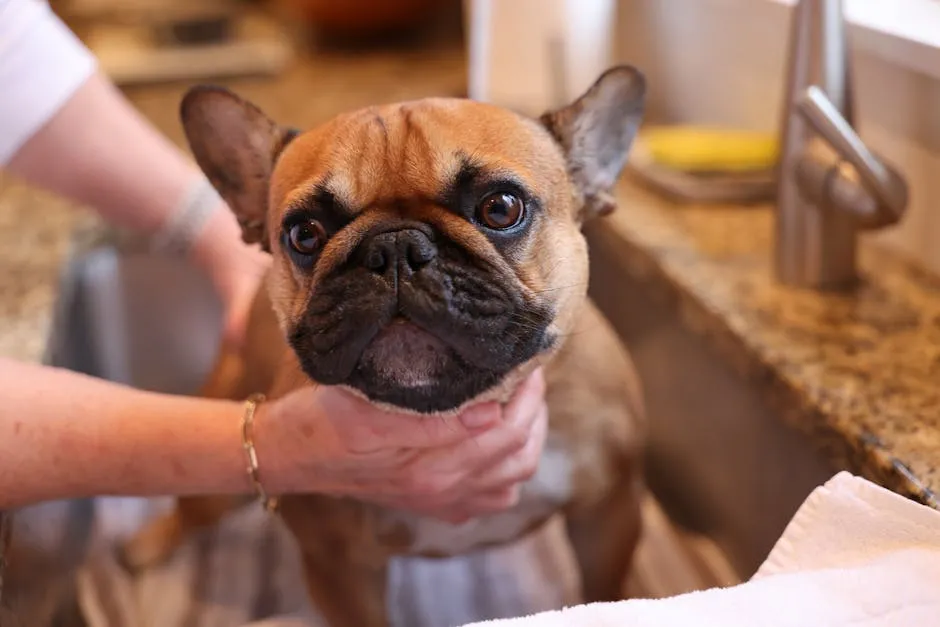
4. Control the Bleeding
After cleaning the cut, focus on controlling any bleeding. Apply gentle pressure to the paw pad using a clean cloth or towel. This can help stop the bleeding. If the bleeding is significant, a cold compress can also assist by constricting blood vessels.
Keep an eye on the bleeding. Minor cuts may stop quickly, but deeper ones can take longer. If bleeding persists for over ten minutes or appears excessive, seek veterinary care immediately.
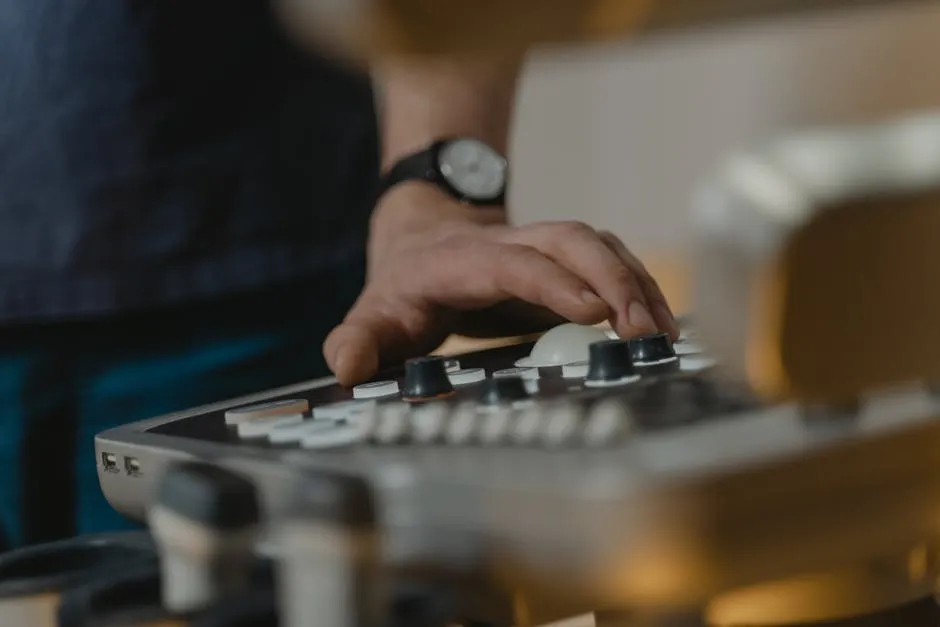
5. Assess the Severity of the Injury
Evaluating the injury’s severity is vital. Minor cuts can often be managed at home with the steps above. However, if the cut is deep, jagged, or has debris lodged in it, veterinary care is necessary.
Look for signs of infection, such as swelling or unusual discharge. If your dog is in significant pain or cannot bear weight on the paw, contact your vet right away. Knowing when to seek help is crucial for your dog’s recovery.
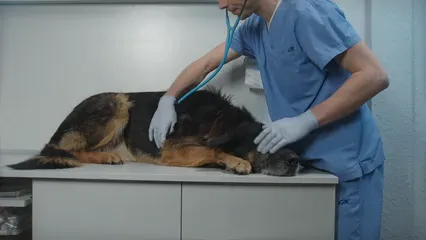
6. Bandage the Wound
Once the bleeding is controlled and the cut is clean, bandaging the wound is essential. Use non-stick sterile gauze pads to cushion the injury and absorb any blood. Wrap your dog’s foot with a self-sticking bandage, like Vetwrap Bandaging Tape, to hold the gauze in place.
Ensure the bandage is snug but not too tight. You should be able to fit two fingers between the bandage and your dog’s skin. This will prevent circulation issues. Changing the bandage daily is important to keep the area clean and dry. Keep an eye out for any signs of infection during the healing process.
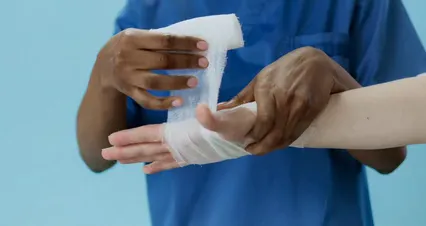
7. Prevent Licking
Preventing your dog from licking its cut paw is crucial. Licking can introduce bacteria, leading to infections. It may feel soothing for your pup, but it can hinder healing. If your dog licks the wound excessively, the cut may reopen. This can prolong recovery and lead to complications.
Consider using deterrents like Elizabethan collars. These collars, often called “cone of shame,” prevent dogs from reaching their paws. They are effective for keeping your dog from licking while allowing the cut to heal.
Another option is to use protective booties. These can shield the cut from dirt and germs. Plus, they help prevent your dog from licking. For added safety, consider a Dog Paw Balm to soothe and protect those delicate pads.
Maintaining proper dog paw care is essential. By preventing licking, you help ensure a smooth recovery. Always keep an eye on the injury and consult your vet for any concerns.

Ongoing Care and Monitoring
Aftercare for Healing Paw Pads
After treating your dog’s cut, daily care is essential. Change the bandage every day to keep the area clean. Monitor for signs of infection, such as swelling or discharge. Keeping the bandaged paw clean and dry is vital.
Limit your dog’s activities during recovery. Avoid vigorous exercise that could worsen the injury. Short walks on soft surfaces are ideal. To make these walks enjoyable, consider using a Dog Leash that offers comfort and control.
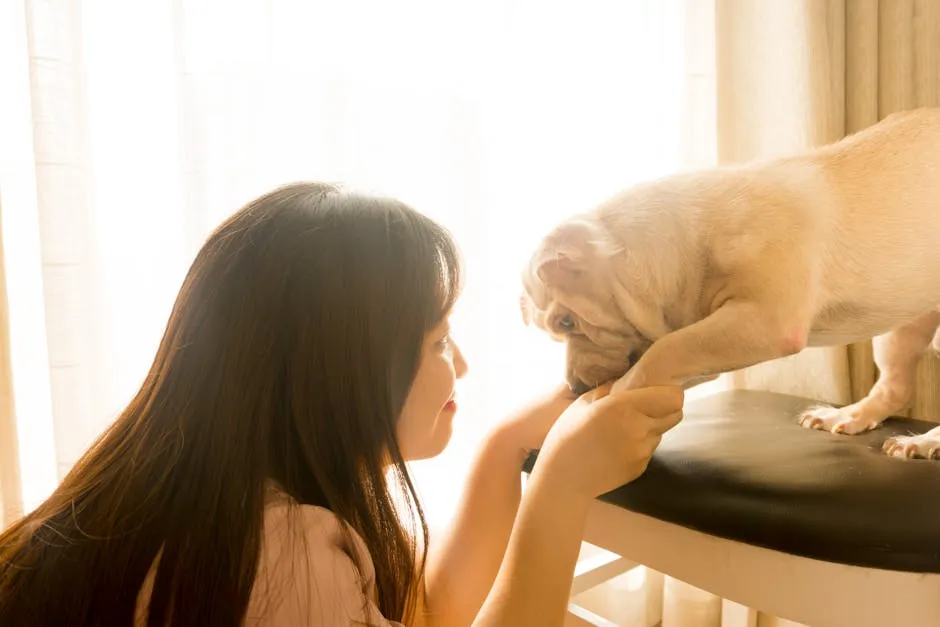
Healing Time for Paw Pad Injuries
The healing time for paw pad injuries varies. Minor cuts often heal within a week. However, severe cuts may take several weeks. Factors like your dog’s age and overall health can affect recovery.
If you notice prolonged healing or worsening symptoms, consult your veterinarian. They can provide guidance on proper care. Understanding healing time for paw pad injuries helps you anticipate your dog’s needs.

When to See a Veterinarian
Signs That Require Immediate Attention
Knowing when to visit the vet is crucial. Certain signs indicate your dog needs immediate professional care. If your dog has a cut on its paw, look for these symptoms:
- Excessive bleeding that won’t stop.
- Deep lacerations or tears requiring stitches.
- Large foreign objects embedded in the paw.
- Discolored or foul-smelling discharge from the wound.
- Signs of severe pain or distress, such as whining or limping.
These indicators can signal veterinary emergencies that require prompt attention. Your dog’s comfort and mobility are at stake, so don’t hesitate to seek help.

Conclusion
Prompt care for cut paw pads is vital. Early intervention can prevent complications and ensure a smooth recovery. Always monitor your dog’s paw health and take proactive steps to maintain it. If you’re ever unsure about an injury, consult your veterinarian. Their expertise can make a significant difference in your dog’s healing process.
FAQs
What should I do if my dog cuts its paw pad?
Immediately clean the wound and apply pressure to stop bleeding. Contact your vet for further advice.
How can I tell if my dog’s paw injury is serious?
Look for excessive bleeding, deep cuts, or signs of infection like swelling and discharge.
Is it safe for my dog to lick its cut paw?
Gentle licking may help clean minor wounds, but excessive licking can lead to infection.
How long does it take for a cut paw pad to heal?
Minor cuts usually heal within a week; severe injuries may take several weeks.
What are the best ways to prevent paw injuries?
Avoid sharp objects, monitor walking surfaces, and consider protective footwear during walks.
Can I use human first aid supplies on my dog?
Some supplies are suitable, but always consult your vet to ensure safety and effectiveness.
What are common signs of infection in a dog’s paw?
Watch for swelling, redness, discharge, foul odor, or increased pain in the injured area.
Please let us know what you think about our content by leaving a comment down below!
Thank you for reading till here 🙂
All images from Pexels





